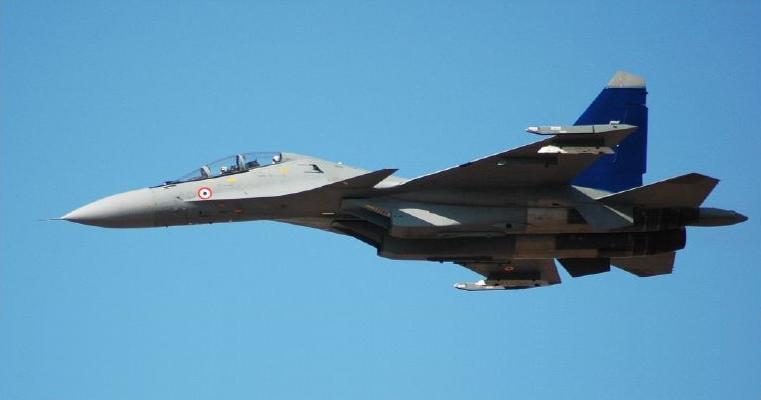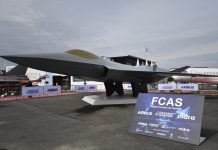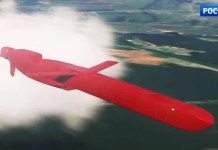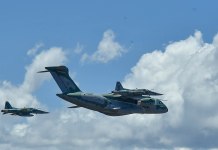US’ F-16 Falcon fighters seem to have repeatedly outgunned Russian jets including Sukhoi Su-30 fighters — be it the battle in the highly contested South Caucasus region of Nagorno-Karabakh, the South Asian region between India and Pakistan, or the resource-rich South China Sea between China and Taiwan.
China Finds Answer To US’ B-21 Raider – The Mysterious JH-XX Stealth Fighter-Bomber – WATCH
The twin-engine Su-30s, despite being a 4++ generation combat aircraft, has time and time again been somehow thwarted by the 4th generation F-16s when it comes to an actual battle in the air.
While the all-weather multi-role two-seat Su-30Ms operated by a host of countries is the most advanced version of the original Su-30 jet produced during the Soviet era, the F-16s have been upgraded to their latest Viper variants.
Officially known as the F-16V Block 70/72, the “Viper” variant is stated to be the most advanced F-16 in the market at the moment, with the fighter sporting a new AN/APG-83 AESA radar, along with upgraded mission computers and cockpit improvements.
Experts have confirmed that Taiwan, which earlier this year, concluded a 62-billion contract with the United States to buy 66 F-16s, will acquire the newly-made jets. The US Air Force has already started the process of installing new ‘5th-generation’ SABR AESA radars in the F-16Vs for the Taiwanese Air Force.
According to Mark Rossi, director, SABR programs, Northrop Grumman, “The radar enables F-16 pilots to detect, track, identify and target a greater number of threats faster and at longer ranges from outside the threat envelope. This upgrade will keep the multirole F-16 fighter relevant and capable for decades to come.”
The Taiwanese single-engine Vipers are being developed at Lockheed Martin factories in Greenville, South Carolina, and Fort Worth, Texas, and are likely to join the Taiwanese fleet which already boasts 140 F-16 fighter jets.
Taiwan vs China
As Taiwan has been consistently threatened by China and claimed it as an inalienable part of the country, Beijing has repeatedly carried out war drills near Taiwanese air space and intimidated the tiny island nation.

Usually, China’s military uses the Su-30MKKs and other indigenous, re0engineered jets to intimidate Taiwan, however, the tiny island nation has been fearlessly dispatching its US-origin F-16 jets to thwart the Chinese warplanes. And the presence of an F-16 Viper, the most advanced variant of F-16, could possibly change the dynamic completely in favor of Taiwan.
The Viper variants integrate their advanced capabilities that help it to interoperate with fifth-generation aircraft like F-35 stealth fighters.
In addition, the fighters also possess the ability to be deployed in the suppression of enemy air defense (SEAD) missions, air-to-air combat, while also being capable of carrying out maritime interdiction missions.
Azerbaijan-Armenia War
In the aftermath of the month-long conflict between Azerbaijan and Armenia, Yerevan reportedly refused to field its Su-30s fearing that the Turkish F-16 Vipers in command of Turkey would be used to take down their Russian jets.
Turkey, which has around 245 F-16s, had sent a contingent of around six fighters to Azerbaijan during a joint exercise earlier this year, out of which a few still remained deployed within the country to be used against Armenia.
While both the Su-30s and F-16s are very agile and excellent dog-fighters, the fact that the American fighters are lighter gives it an edge. The F-16s are faster than the Russian jets with the Falcons being able to attain speeds of Mach 2 in comparison to Su-30s maximum speed of Mach 1.7.
India-Pakistan Conflict
The two fighters had a confrontation last year when the Indian Air Force (IAF) came face to face against the Pakistani Air Force (PAF) and the F-16 jets again demonstrated why they were superior to Russian-origin jets.

In retaliation to the IAF strikes in Balakot on terror hideouts, the PAF aggressively positioned a large formation of 24 fighters near the Line of Control (LoC) against eight fighters fielded by India, which included two Su-30MKI jets.
However, the SU-30MKI was found lagging behind in air combat against the F-16s with the PAF fighters launching US-made AIM-120 C5 Advanced Medium-Range Air-to-Air Missiles (AMRAAM) at the Su-30s.
According to defense experts, “The PAF surprised the IAF by launching air-to-air missiles from inside their territory. The AMRAAM completely outranged the SU-30MKI air-to-air missile.” “The best the Su-30 MKIs could do was to evade the F-16 missiles but were never in a position to shoot them down.
This event forced the Indian side to look at the I-Derby variant of the Israeli missile, which might give the Su-30s a better chance to stand against the F-16s in a future conflict.
According to National Interest defense writer Caleb Larson, the upgraded versions of the F-16s are seen as a perfect replacement for fighters like the Su-30s.
“Lockheed touts their F-16 as an ideal stepping stone for countries who want to retire their older Soviet-era MiGs and Sukhois, but can’t go straight into the F-35 stealth fighter program. Even some NATO member countries who aren’t currently F-35 operators may find it beneficial to upgrade to the older — but nonetheless nimble F-16 beforehand,” Larson said.




